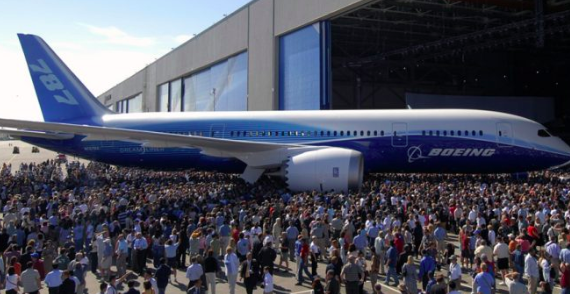How the Boeing 787 Dreamliner is making the A380 an Icon of the Past
May 28, 2019
The 787 Dreamliner still has yet to break even for the money invested in the program even though it was first released over a decade ago. Nonetheless, it is regarded as one of the most successful and revolutionizing planes in aviation history. The Dreamliner program was estimated to cost roughly 10 billion dollars for all fees (supply, production, assembly, etc.) however the current estimated cost of production is at 32 billion dollars. The 787 was originally projected to release in May of 2008, but a total of eight separate delays delayed the release to 2011. The delays were for a variety of reasons, but supply chain problems, weight discrepancies, and design flaws were the main culprits. Additionally, after the plane released in 2011, and the first order of 787s was delivered to All Nippon Airways, the plane did not meet the weight promises and the fuel efficiency Boeing had promised. Over the next year as more orders were delivered, Boeing had to pay a couple billion dollars in total for customer compensation since their plane had not lived up to promises. Additionally, in 2013, the plane was grounded for three months due to potentially defective lithium batteries which held the risk of catching fire. It is estimated that Boeing will probably need 1400 orders of the plane to break even.
In spite of these setbacks, the plane is prospering among airlines. The 787 fits in the medium to long haul range of flying. In this class, it is the most fuel-efficient and flexible aircraft on the market. Its flexibility is shown by it being economically efficient in both point to point and hub and spoke flying. For example, airlines like Japan airlines use the Dreamliner to operate from Tokyo to San Francisco, a very high demand route. For Ultra long-haul, the 787 is used to operate a route from Perth, Australia to London, England. While doing all of this, the 787 leaves the A380 as irrelevant. The 787, when it is a fully loaded plane, is more fuel efficient than an A380 when it is a fully loaded plane. The 787 can support point to point flying because it is easier to fill, and the A380 cannot because it is too hard to fill. Additionally, the 787 has a type rating of 330 minutes. The plane can legally fly 5 and a half hours away from any diversion airport. This means that it can literally travel any route ever thought of in the airline industry before. Although it was initially plagued by delays and design flaws, the 787 is proving to be worth it for Boeing.

